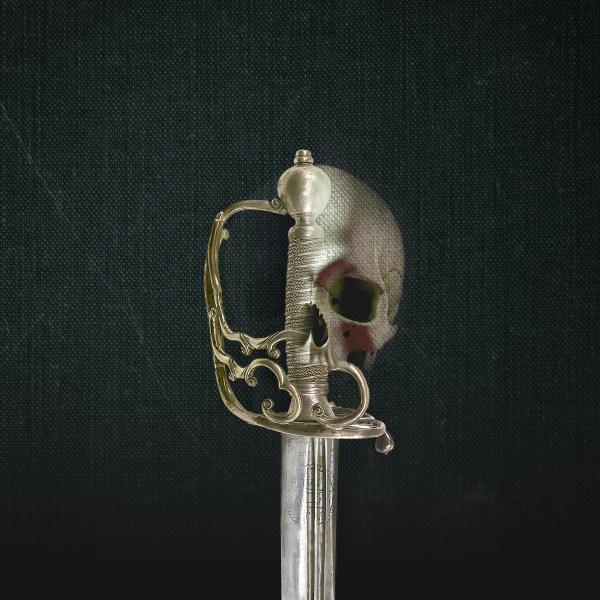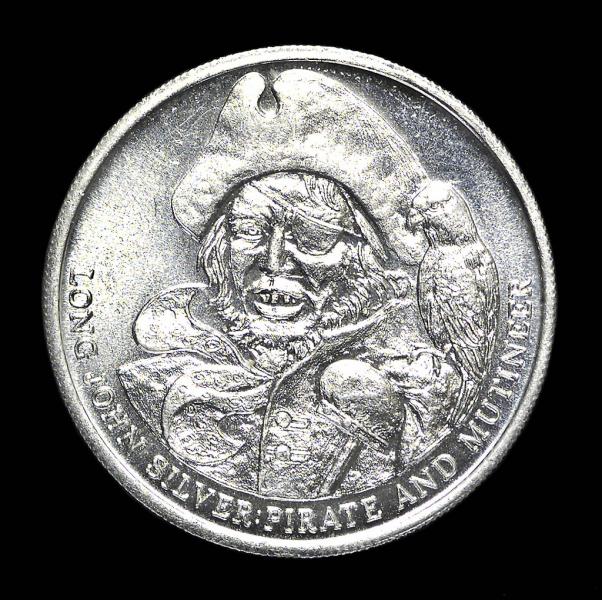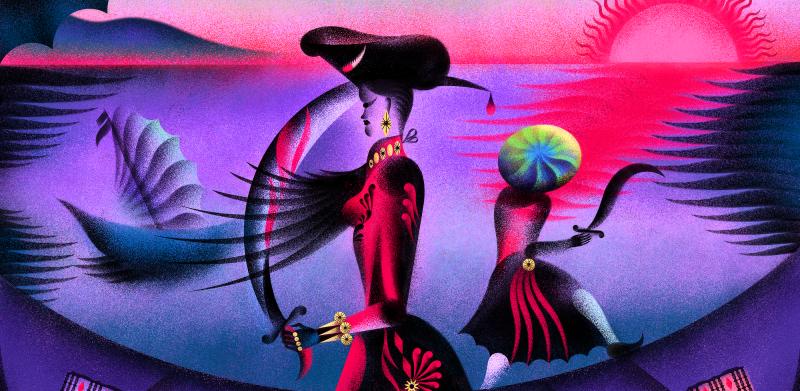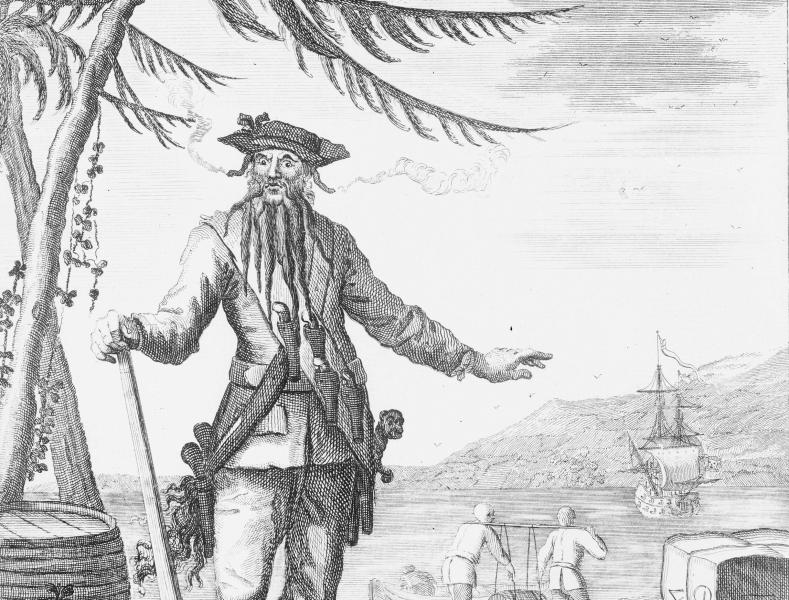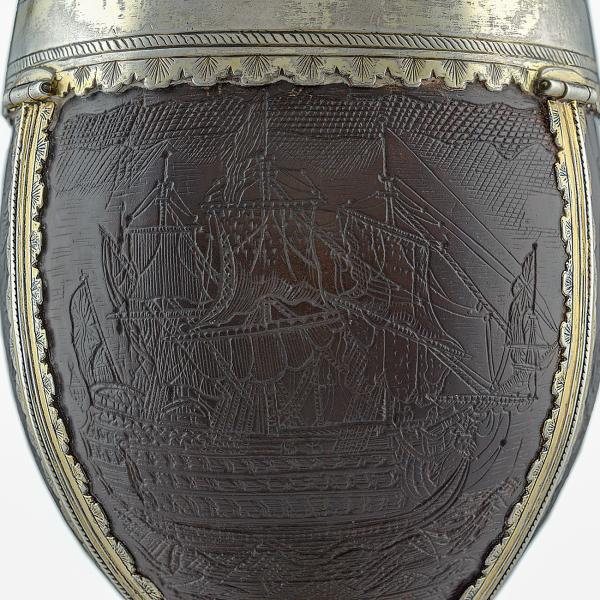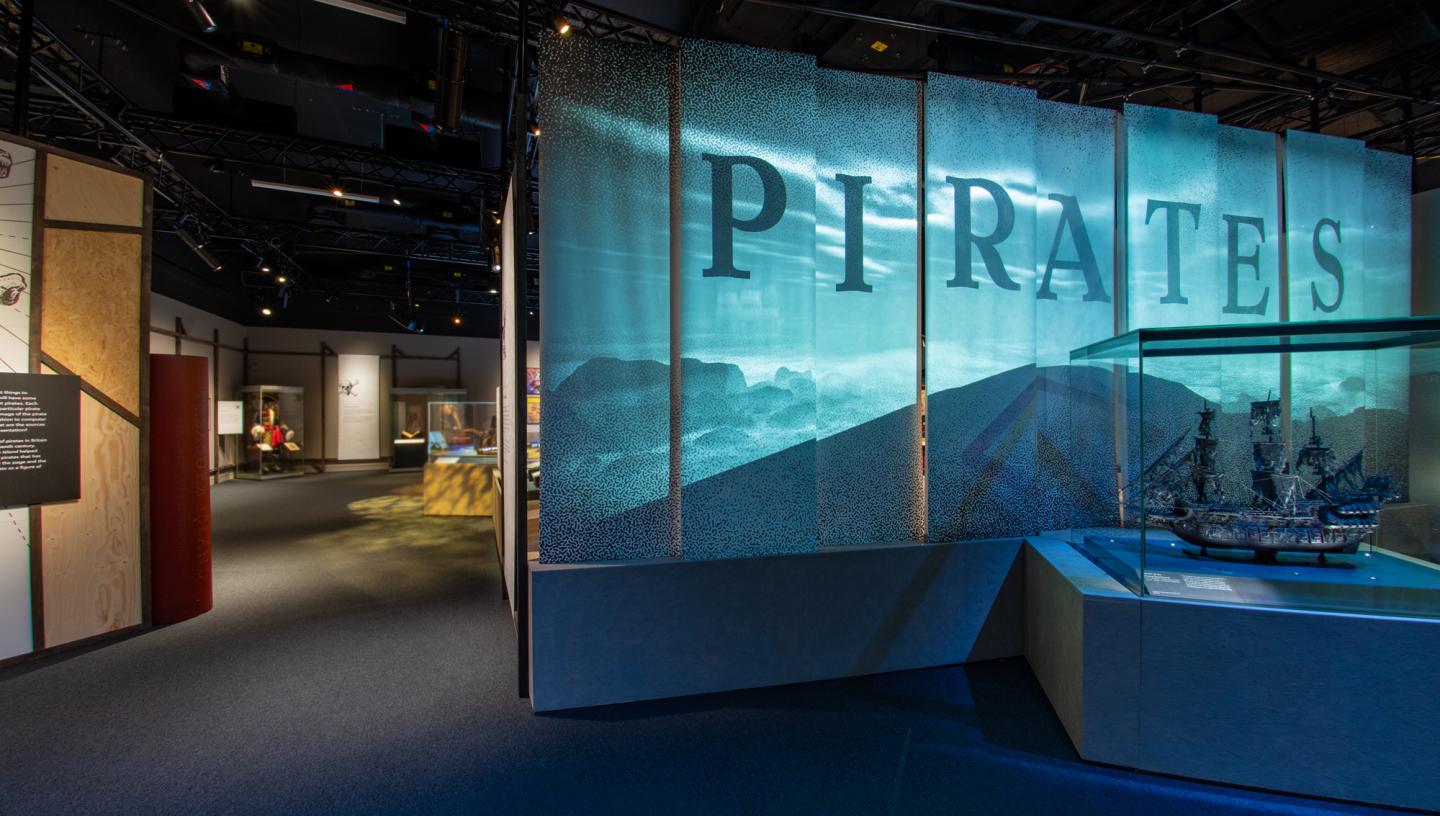
Pirates follows the changing depictions of pirates through the ages and reveals the brutal history often obscured by fiction.
Featuring more than 200 remarkable objects, the exhibition at the National Maritime Museum charts the story of piracy around the globe and explores our shifting attitudes to history's most infamous seafarers.
Think you're ready for a pirate's life? See a selection of objects from the exhibition below, and book tickets now to see Pirates for yourself.
The pirate hunter's cup
In just three years, the pirate Bartholomew Roberts – also known as 'Black Bart' – captured and stole from well over 400 vessels, making him the scourge of Atlantic trade in the early 1700s.
But in 1722, his successful criminal career was dramatically cut short. Roberts’s gory death at the hands of Captain Chaloner Ogle, his nemesis and the owner of this cup, marked the beginning of the end of the so-called ‘golden age’ of piracy.
The cup, carved from a coconut shell and set within a silver mount, is a rare and tangible reminder of that time. See it on display during the exhibition, and learn more about the life and death of 'Black Bart' by purchasing Captain Ogle's Cup: A Pirate Adventure.
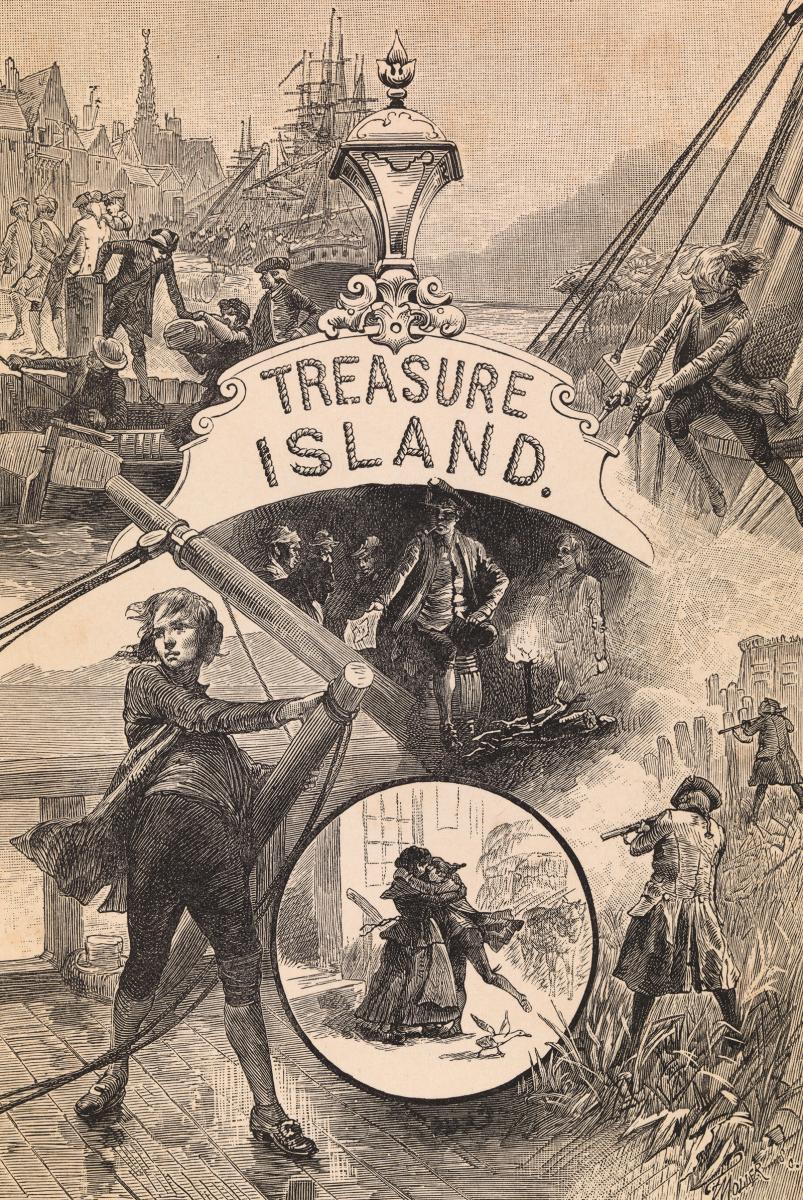
Treasure Island
The popular appeal of pirates in Britain can be traced to the late nineteenth century. In particular, the novel Treasure Island by Robert Louis Stevenson helped to create an enduring image of pirates that has inspired countless others.
The novel follows the adventures of a young boy, Jim Hawkins, and his quest to find buried treasure. Through Stevenson’s story we encounter cutthroat pirates, a secret treasure map and a talking parrot.
Treasure Island is not a cosy tale of loveable pirates; Jim is exposed to the dangerous, adult world of piracy from the start. He witnesses a murder and is forced to shoot a man dead to save himself.
The book has never been out of print.
Talk like a pirate? Treasure Island and the making of a myth
Treasure Island has been adapted dozens of times for film and television around the world.
In 1950, Walt Disney’s Technicolor Treasure Island was the studio’s first live-action feature. Robert Newton played Long John Silver with a West Country accent that is now synonymous with how we expect British pirates to sound. Even the Muppets have searched the island for buried treasure...
Visit the exhibition to see how Treasure Island made movie history, and discover why pirates continue to bring in box office treasure.
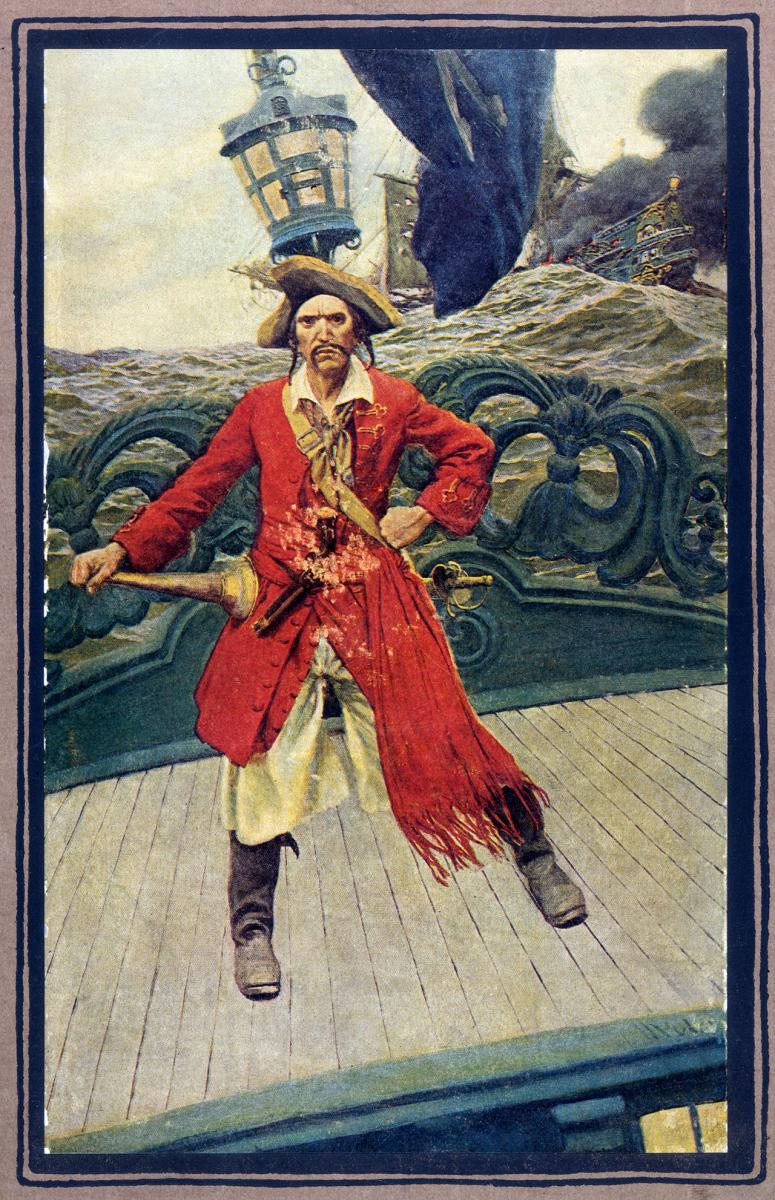
Howard Pyle's Book of Pirates
The American illustrator and author Howard Pyle produced images and stories for various magazines. Following his death, these were collected and published in 1921 as Howard Pyle’s Book of Pirates. His distinctive way of depicting pirates – borrowing elements from French fashion and stereotypical Romani costume – had an immediate influence on Hollywood.
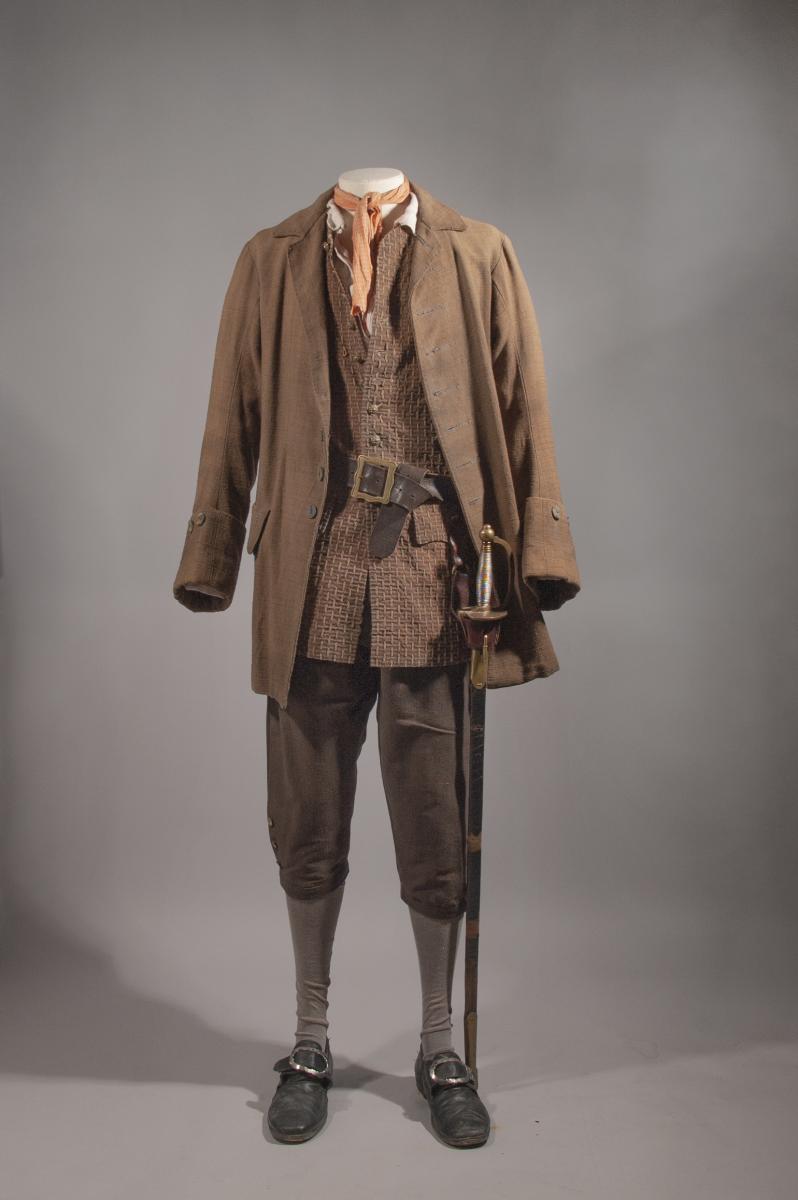
Original costume from Pirates of the Caribbean
The actor Orlando Bloom played the character Will Turner, Jnr in four Pirates of the Caribbean films. This costume was worn during the first film, in a dramatic sword fight between Turner and Captain Jack Sparrow.
The British designer Penny Rose created the costumes for all five films, drawing inspiration from Howard Pyle’s illustrations.
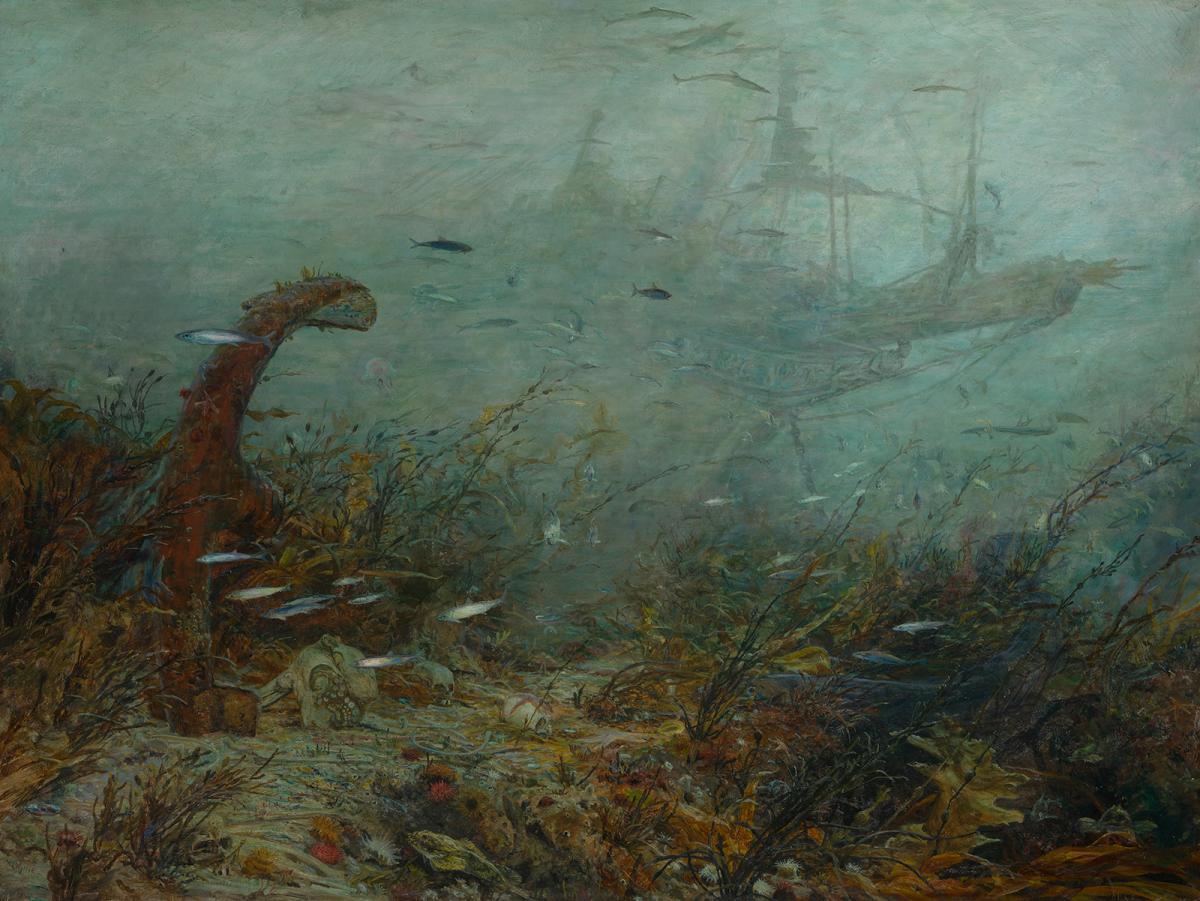
Davy Jones's Locker
In this evocative painting, artist William Lionel Wyllie depicts the world of Davy Jones, the mythical figure said to rule over the evil spirits of the deep. The ghostly outline of a wrecked ship looms in the distance.
In the Pirates of the Caribbean franchise, Davy Jones is depicted as the pirate captain of legendary ghost ship the Flying Dutchman. Seafaring myth continues to shape how we imagine the pirate world.
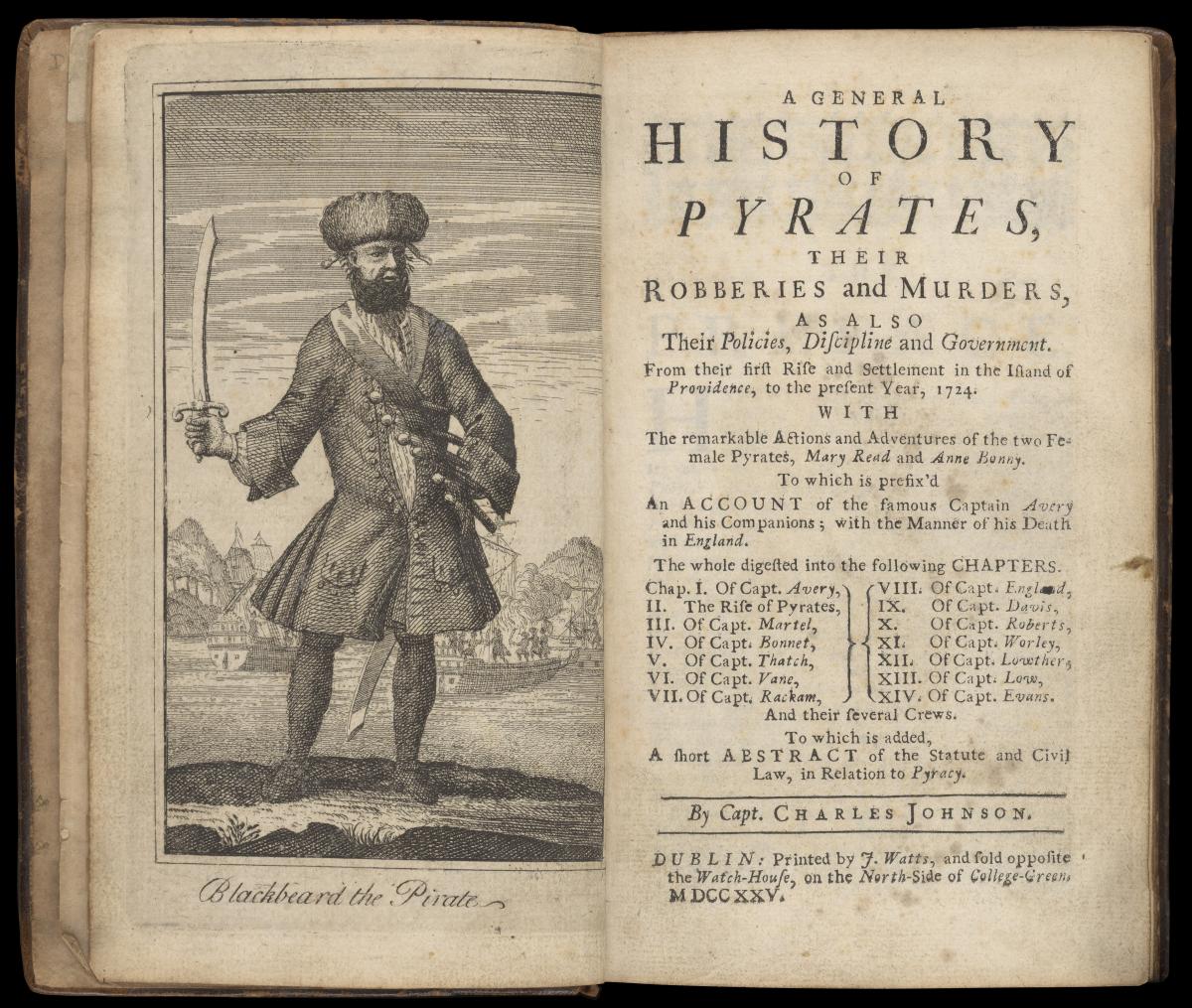
A General History of the Pyrates
The image of the pirate in fiction was drawn from the real pirates of history. In the Western world, many of these pirates were active from the 1680s to the 1720s.
Pirates and their criminal adventures caught the public imagination during this time, inspiring publications and the early development of the familiar pirate image.
A General History of the Pyrates, written by Captain Charles Johnson and first published in 1724, is made up of short biographies. These were based on trial records, newspaper reports and interviews with former pirates. In places, its accuracy is doubtful, but the book remains an important historical source for writers and filmmakers.

Lieutenant’s logbook for the Pearl, 1718–19
This original logbook, kept by Lieutenant Robert Maynard, records the fate of the notorious pirate Edward Teach – also known as ‘Blackbeard’.
In his short pirate career, Blackbeard proved very successful, capturing ships in the Caribbean and along the east coast of North America. In November 1718, Lieutenant Maynard, commanding the warship Pearl, engaged him in battle. After fierce fighting, Blackbeard was beheaded. For many years, his severed head was visible on a stake at Chesapeake Bay in Virginia.
Open worlds: gaming and the 'golden age' of piracy
Assassin's Creed IV: Black Flag is an action-adventure game that blends historical events with a fictional narrative.
Players take on the role of Edward Kenway, a pirate-turned-assassin, as they attempt to establish a pirate republic in the Caribbean.
It's true that the waters of the Caribbean were appealing to pirates. There were many trading vessels to attack and secluded coves provided hiding places away from the authorities. In the 17th century, the island of Tortuga, just north of Hispaniola, became a stronghold for pirates and privateers.
Black Flag is renowned for its detailed depiction of pirate life and the blurred line between freedom and lawlessness, but is just the latest in a long line of pirate video games. Head to the exhibition for a slice of gaming history.
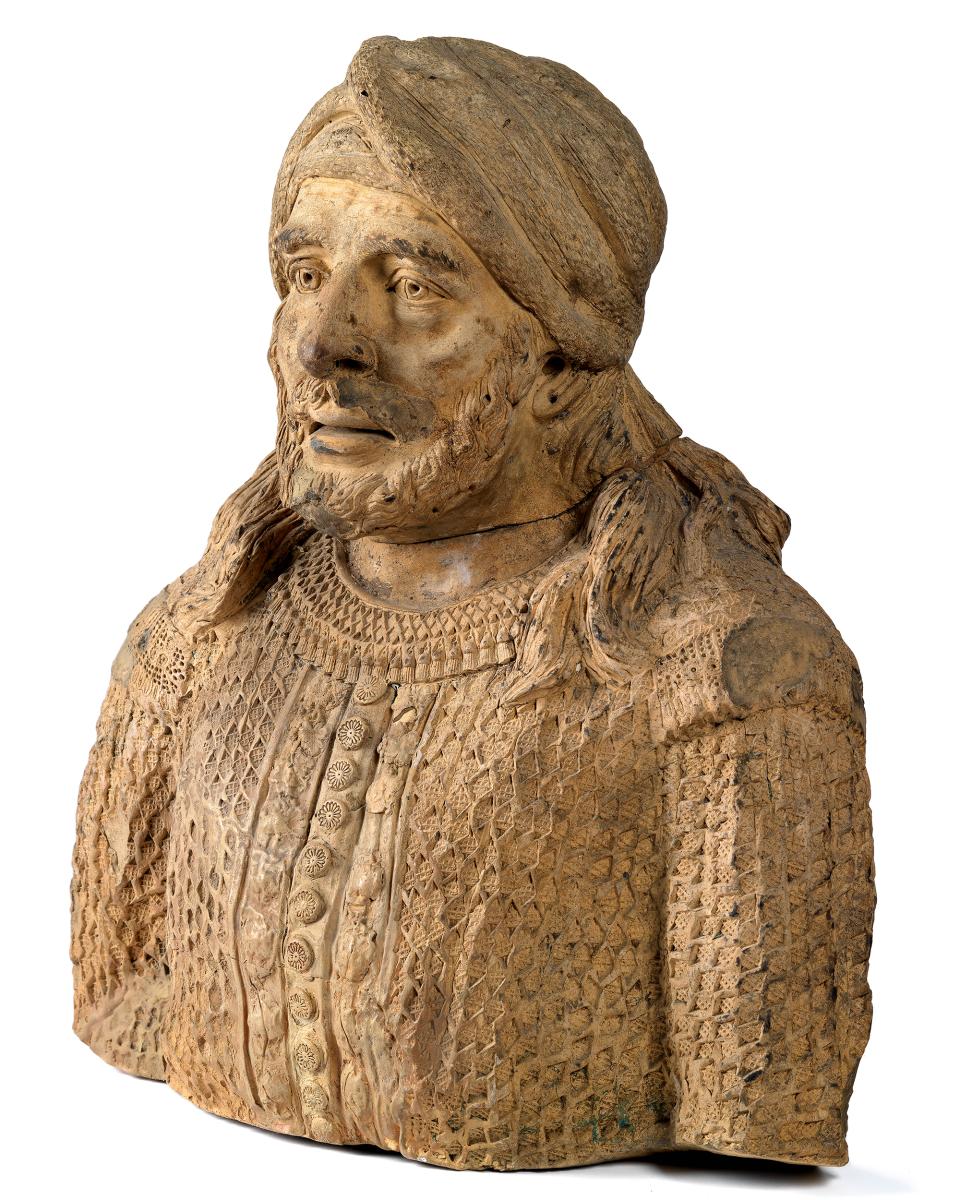
Bust of a Moroccan man
This terracotta bust, made in around 1700, depicts a man wearing a headdress associated with the Rif people of north-eastern Morocco. The port of Salé was the base for many pirates operating in the region, who became known as ‘Salé Rovers’.
They were part of the wider pirate community along North Africa’s ‘Barbary Coast’, the historical name for the North African coastal regions that include modern-day Morocco, Algeria, Tunisia and Libya.

The Bombardment of Algiers
This dramatic painting commemorate the Bombardment of Algiers, 1816, when a British-led naval force attacked the city in an attempt to resolve the longstanding issue of piracy on the north coast of Africa.
After intense shelling, the city suffered significant damage, with an estimated 1,000 to 3,000 casualties, including both military and civilian deaths, though the precise number remains uncertain.
Artist George Chambers captures the drama by highlighting British ships in the foreground, with the city engulfed in smoke and flames in the background.
Tools of the trade
Pirates were well armed. Not only did this give them greater chances of capturing a ship, but it also enhanced their fearsome reputation.
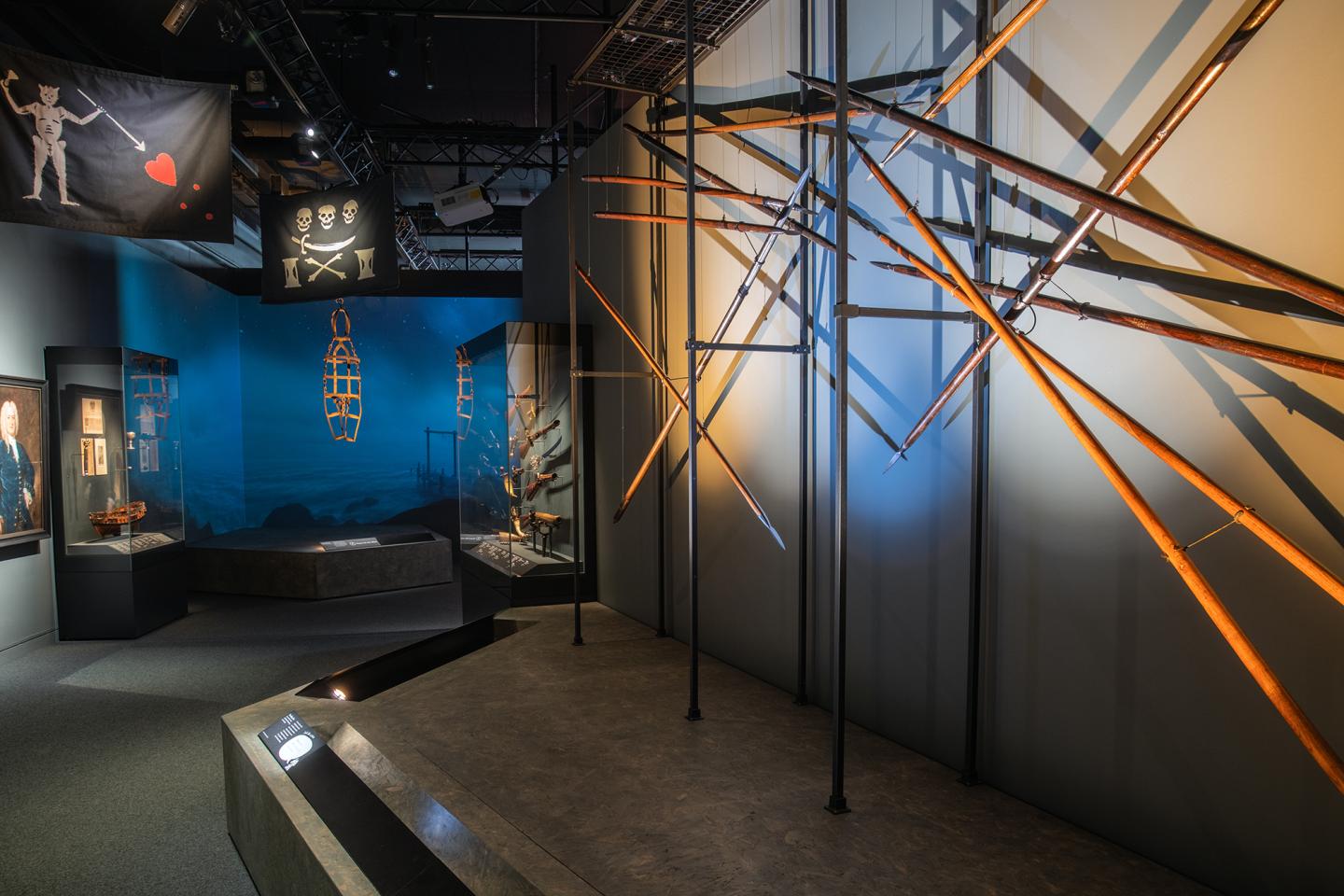
From cutlasses and boarding pikes to muskets, cannon and AK-47s, Pirates brings into sharp relief the reality of pirate attacks.
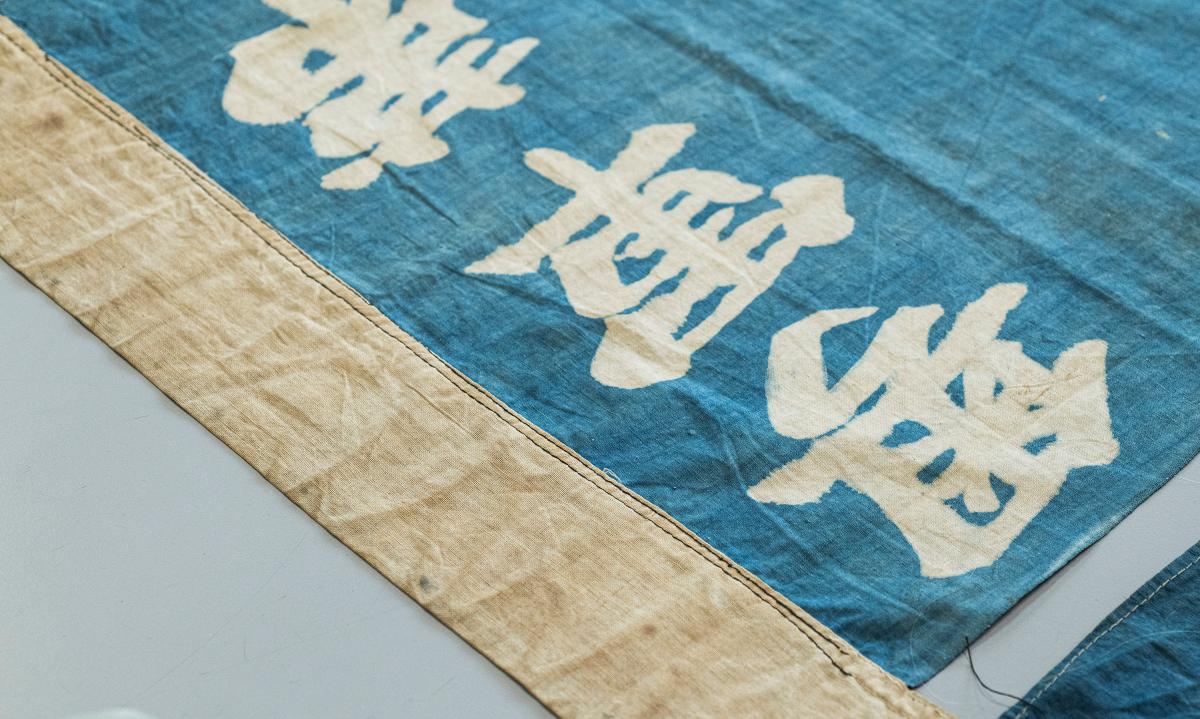
Chinese false colours
The 'Jolly Roger' is arguably the defining pirate symbol – but there is more to the pirate flag than the infamous skull and crossbones. The exhibition highlights how several pirates adopted their own distinct designs. Sometimes the sight of a flag was enough to terrify a crew into submission.
Flags could also be used to deceive. This flag was captured from Chinese pirates near Canton in 1926. It was originally the flag of Li Jishen, commander-in-chief of the Guangdong Army. However, the pirates used it as 'false colours', to disguise their identity and catch their victims unaware.
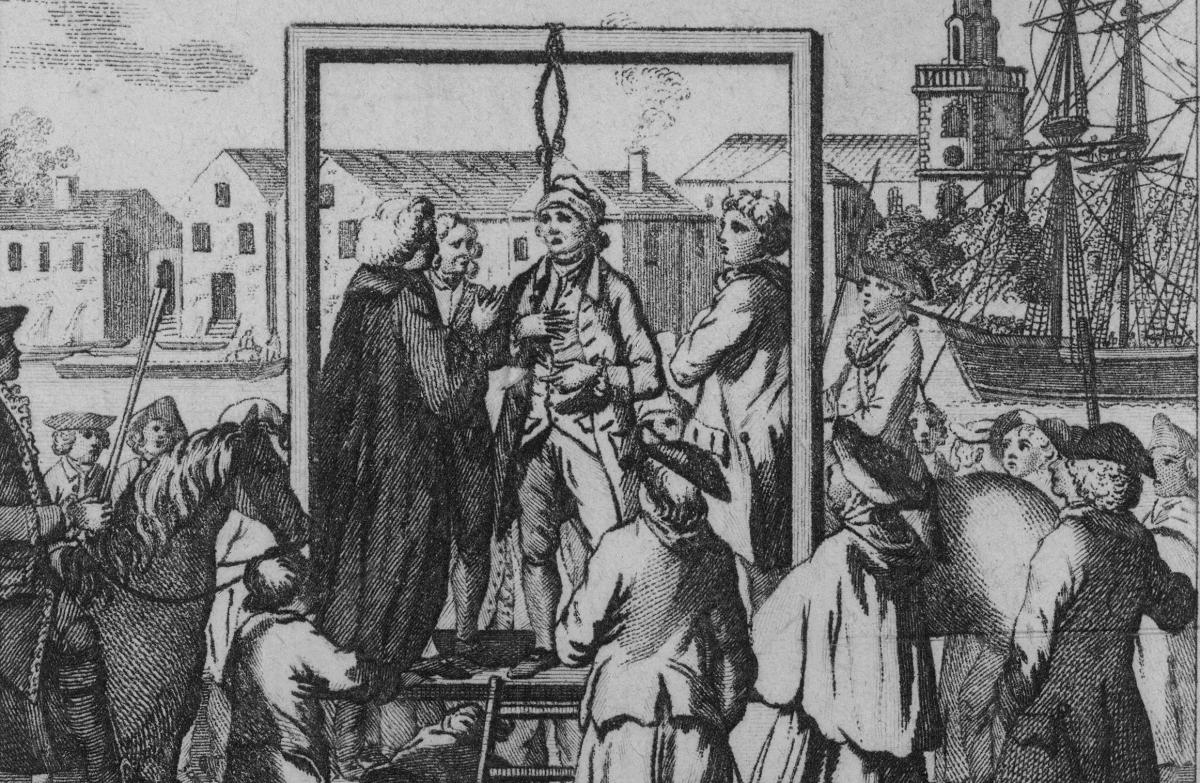
A Pirate Hanged at Execution Dock
This late eighteenth century engraving shows the gallows that once stood on the north bank of the River Thames.
“For 400 years until 1830, Execution Dock on the River Thames was used as a place for public hangings,” writes Dr Robert Blyth in Buried Treasure: A Pirate Miscellany.
“Hanging was a grisly affair during the ‘golden age’ of piracy,” he explains. “A short rope was used, which left the condemned to strangle slowly to death, which could take up to 45 minutes.
“As they fell unconscious, the spasms of their limbs became known as the ‘Marshal’s dance’, named after the court official, or to ‘dance the hempen jig’, referencing the rope. The dead body was left hanging in the noose until at least three tides had submerged it.”
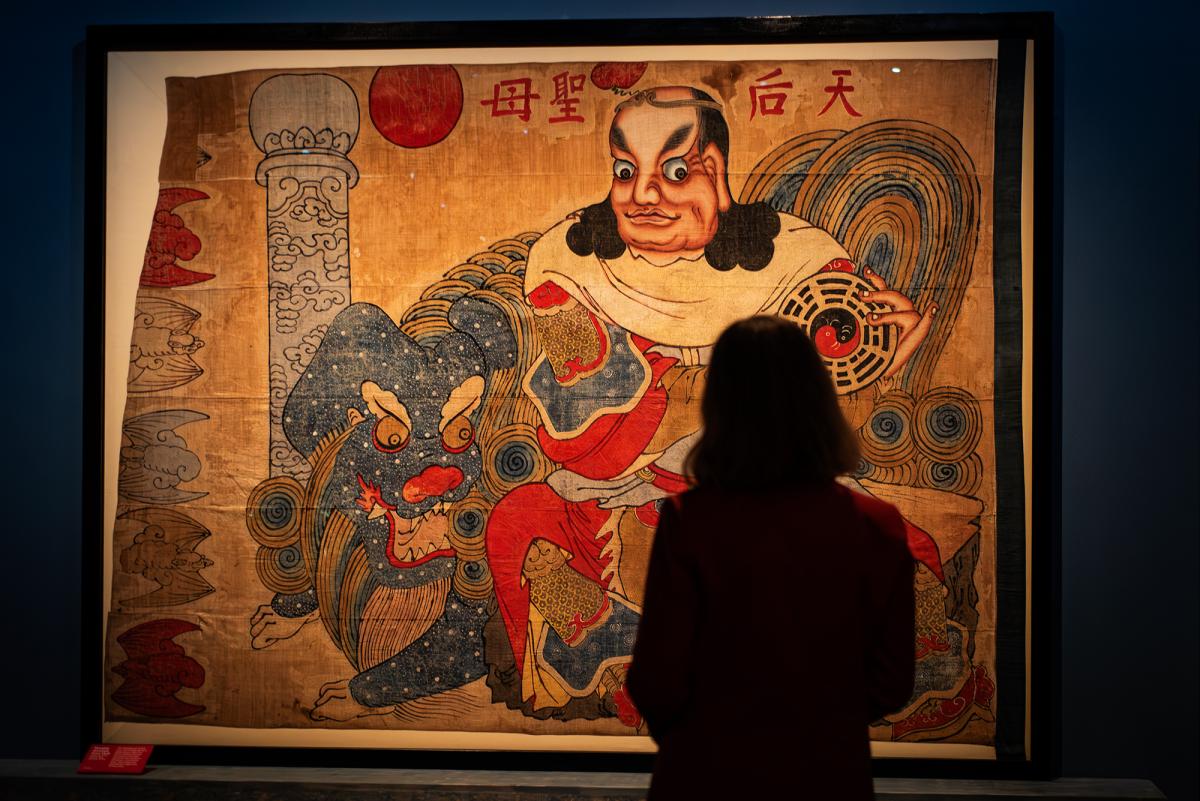
Hanging depicting Ziwei Dadi
The decline in piracy linked to Europe and North America did not mean an end to piracy elsewhere.
Piracy in South and South-east Asia was shaped by the region’s strategic trade routes and diverse maritime cultures. Colonial powers, including the Portuguese, Dutch and British, drove an increase in piracy while simultaneously attempting to suppress it to secure their own trade dominance.
This hanging was seized from one of pirate Shap Ng-tsai’s pirate junks in 1849. It is from a shipboard shrine and shows Ziwei Dadi, one of the four Emperors of Heaven, a Cantonese deity. Shap’s fleet was attacked by English and Chinese ships.
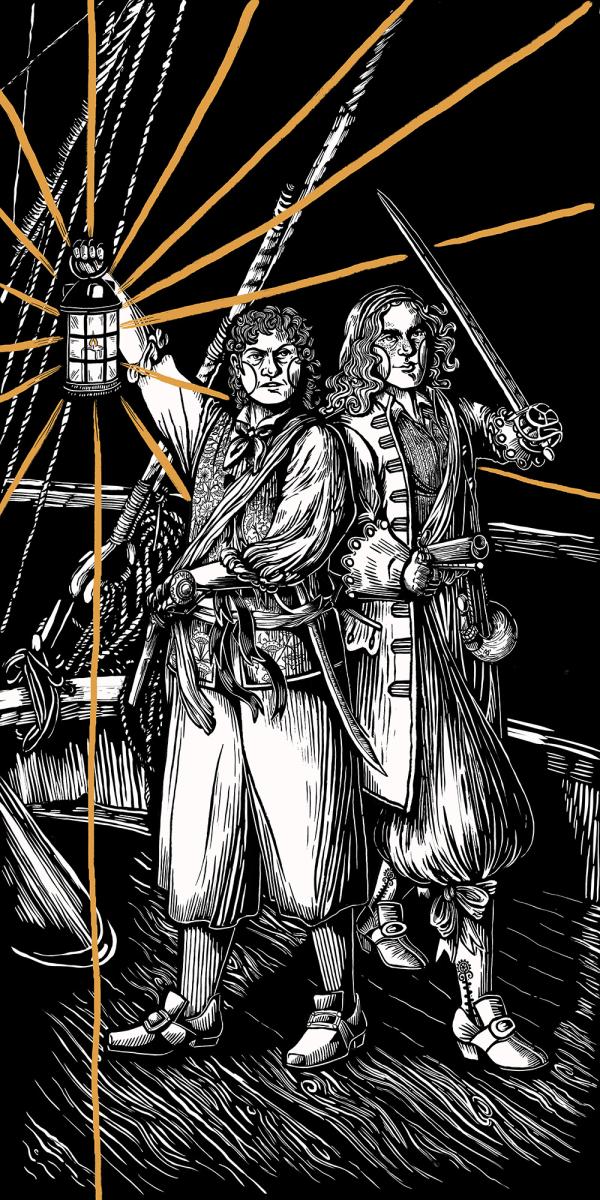
Piratical and Felonious
Historical images of female pirates Mary Read and Anne Bonny regularly depict them as mirrors of one another. In this contemporary illustration, artist Linnea Maertens invites us to question what we think we know about these real-life figures from history.
'Initially, Bonny and Read seem like the prototype of female pirates,' Maertens explains, 'but when I started researching further into their stories, I realised they were these strong gender outlaws who were passionate, unique – and different from each other.'
